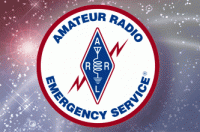|
Welcome,
Guest
|
TOPIC:
MESH: A Focus on Emergency/Disaster Comms (Oct. 2017) 6 years 5 months ago #785
|
MESH Training Held in Utah Focuses on Emergency/Disaster Communications
A MESH Training seminar was held on Saturday, October 28, at the Miller Public Safety and Education Building, Sandy, Utah, conducted by MESH pioneer David Bauman, KF7MCF. [Amateur Radio MESH is an over the air computer network of nodes with broadband capabilities conducted on the amateur microwave bands for high-speed networking in various modes - television, imaging, text and others.] Session 1 covered Basic MESH -- what is it, how does it work, and what can it do. Session 2 addressed Advanced MESH -- How to make AREDN (see below) work in the real world; and the three issues that AREDN has that will bring the network to a screeching halt, and how to solve or get around them. Session 3 covered tools and programs to help set up and run MESH, the three step method to make sure a link will work, and what can you do on the MESH pipeline. A MESH equipment show and tell was presented, with examples of hardware, and also hardware available to be purchased on site. Bauman said "we always seem to be lucky enough to fill the room, and attendees hung around asking questions and getting equipment." " We provide MESH Go-Kit starter equipment at lunch money prices along with the training," he said. "The seminar was a success." Basic Go-Kit equipment is now in the hands of over 100 hams in the Salt Lake Valley and surrounding areas. Bauman reported "now what we are doing is training them in the use of the hardware and software that we will use in an emergency/disaster response deployment; several MESH training sessions have already been held, with more to come." The MESH group is currently working on a project to link the Mayor's office and Emergency Communications Center (ECC) of a small city to their three fire stations, the Police dispatch center, and the local hospital with a high speed digital MESH network, "you might say our own private ham Internet," Bauman said. "This is the third local city that has shown interest in using MESH deployed by hams to back up and augment their existing emergency communication avenues with high speed digital capability." The group has been asked to demo the system to the city council and Mayor at an upcoming meeting. Bauman said "we will demo high speed file transfer of messages (used by the Red Cross to send Well Messages from shelters) to a collection point and then upload them to an HF radio system and network." "We can transfer pictures and other files, along with real time video and audio, even a repeating streaming audio or video message to tell hams signing on how and where they are needed, and what to do." VoIP and the above mentioned capabilities are available on laptops connected to the group's network, and also the ability to use real old style phones (some of the city residents are much more comfortable with a simple old style phone with a number to call for the Police, Fire and the hospital rather than a push to talk radio). The group's demo will show officials that they can use real-time video, pictures (of damaged roads, overpasses, or buildings for the City Engineer), or of injured individuals at a shelter for the hospital to assess/triage) and text messages and live audio one to one, one to all, or to just a select group (Police to all fire stations, for instance). "We can show them how the E-com center can monitor all conversations, text messages, and file transfers and even e-mail inside our network, and outside also, if somewhere on the network we can tap into a satellite Internet link when regular Internet access is down," Bauman said. Several hams are spearheading this effort: Jerry Spillman, W0HU; John Hurst, KF7NQW; Grant Gardner, KC7HOU; Robert Jelf, KG7OHV; Charles Gray, KE6QZU; Edward J. Sim, N7RTA; Brad Rupp, AC7BR; and David T. Bauman, KF7MCF. This is the same group that for years has been using high speed digital networking to augment the packet system used by hams for the local Wasatch 100, arguably the toughest 100 mile race in the country - a race up and down over mountains. This is not only extremely difficult for the runners, but setting up line of sight radio communications in rugged mountains is very challenging. "Our team made it work!," said Bauman. The Amateur Radio Emergency Data Network (AREDN) From its literature, the AREDN™ Project's focus is on emergency/disaster response communications. It seeks to provide hams a means to implement this technology in practical ways to support local and regional emergency communications needs. To that end, the project's objectives are to enable hams to put up a mesh node with minimal expertise and effort; configure the mesh network automatically so that advanced network knowledge is not needed; use low-cost, reliable commercial equipment; define standards for internetwork integration; support those in the process of designing and implementing emergency/disaster communications networks; and refine the software to make implementation easier, more reliable, and more manageable. See YouTube video on AREDN here Source: www.arrl.org/FandES/field/ares-el/?issue=2017-11-15 |
|
Please Log in or Create an account to join the conversation.
Last edit: by WA1SFH.
|
Time to create page: 0.122 seconds
